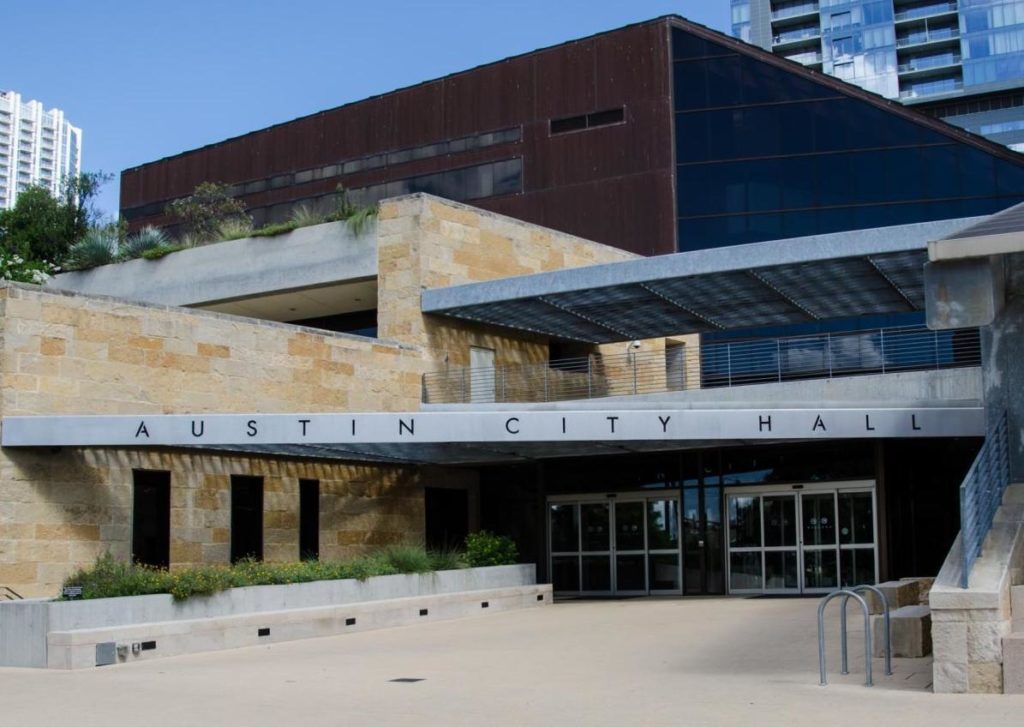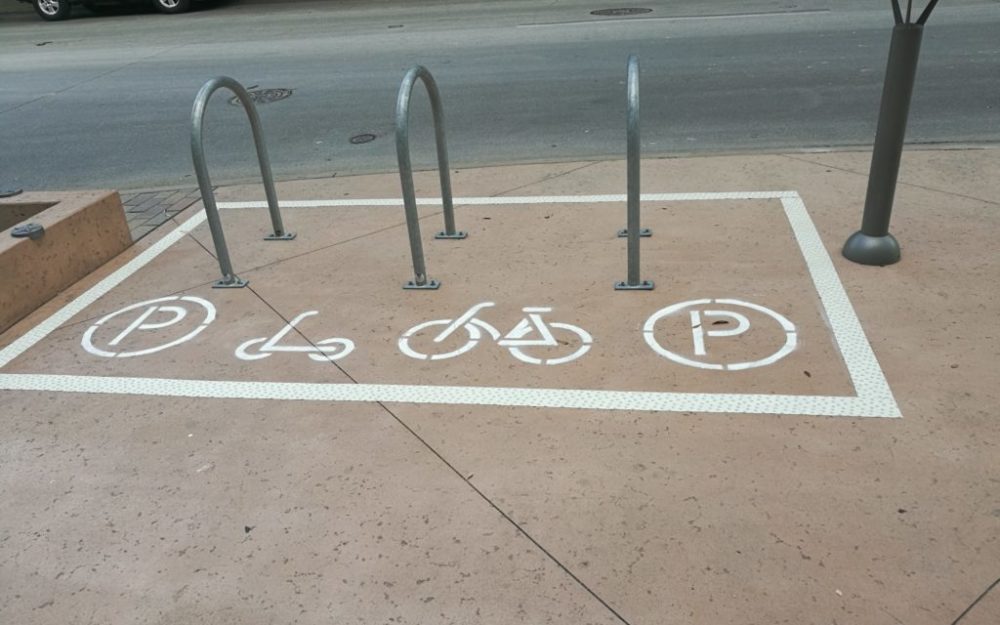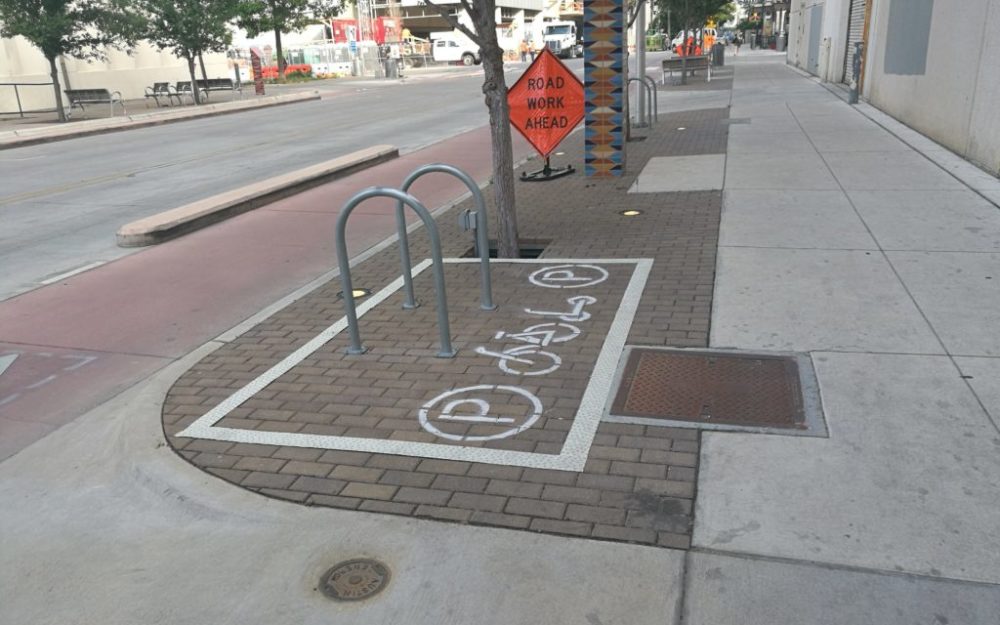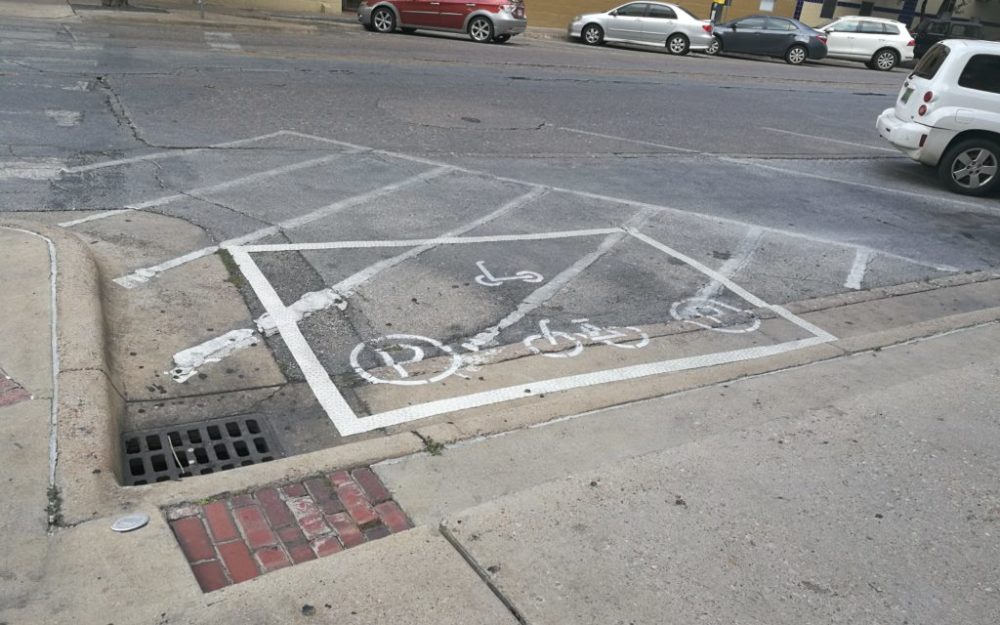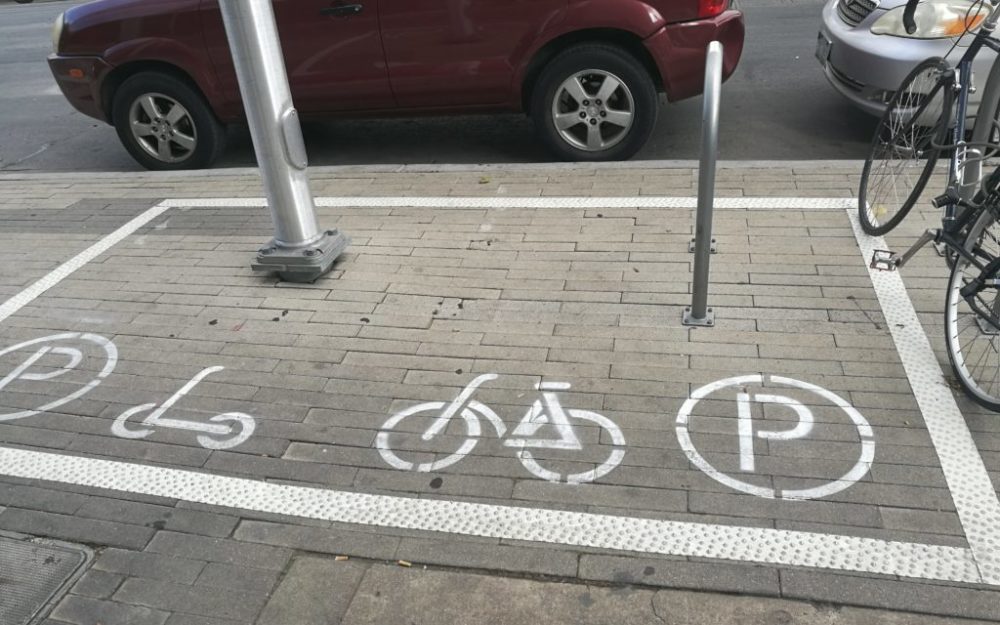This guest post by Dan Keshet was originally posted on TOWERS Austin.
If you hadn’t heard, Austin has a newfangled pilot program for dockless bikes and scooters. This is awesome because scooters are awesome and bikes are awesome, and if you disagree, I’ll leave you in my scooter dust, at no more than 15 miles per hour.
So, now that we’re a month into the city’s new dockless regulations, let’s check in on the progress:
The Rules
On April 27, Austin’s City Council created the dockless pilot program, giving wide latitude to city staff to define the regulations contained within. They came up with this set of rules, so here’s the highlights:
- Each company is capped at 500 vehicles in central Austin. They may, however, apply for more permits for scooters or bikes in areas outside central Austin.
- Each vehicle needs a lavender permit sticker, to be obtained from the city.
- Stickers cost $30. There’s a $20 fee to replace the sticker if you take a vehicle out of commission and replace it with a different vehicle.
- Each company needs to purchase insurance to ensure that it won’t go bankrupt and leave its vehicles behind around town.
- Starting on August 1, dockless vehicles must either have locks that can attach to a bike rack, or a way to alert users that they’re in an acceptable parking location.
Additionally, city staff made a new stencil for locations to encourage people to leave their bikes and scooters in certain places. We’ll check that out in a second.
The Companies
Prior to City Council passing the permitting program, there were two dockless scooter companies operating in Austin: Bird and Lime. At the time, the Austin Transportation Department talked of receiving inquiries from as many as seventeen dockless companies. However, since the program’s creation, only three outfits have received permits: Bird, Goat, and Pace.
Bird, the largest name in scooter rentals, is based in Los Angeles. Prior to the implementation of the new rules, the company scaled its local operations to about 500 scooters on the streets, with signs pointing to continued growth. Bird scooters were deployed in downtown, along with the University of Texas campus, South Congress Avenue, and East Sixth Street; but had not yet been widely distributed to other spots around the city. On weekends, scooters were ridden so often that many started running out of battery power by mid-afternoon. After going through the permitting process, Bird has been approved for 500 permits, but the number of scooters on the streets of downtown and the surrounding area are significantly lower, and scooter riders typically experience longer walks to find a scooter.
Pace is a dockless bike subsidiary of Boston-based Zagster, which started out in the docked bikeshare business. As of June 5, Marissa Monroy of the Austin Transportation Department reports the company had received 220 permits for its standard pedal-operated bikes. Unlike many of the other companies, which employ wheel locks, Pace bikes use chain locks that must be attached to some piece of fixed infrastructure.
Goat is an Austin dockless scooter company still getting off the ground – as of June 5, it had received only 20 permits. Unlike the other companies, Goat has never operated in another city before, and from my experience their app is still working out the kinks.
Lime, a company that provides scooters as well as e-bikes and pedal bikes (also known as “bikes”), had a small presence of scooters in town prior to the permit program, but is now currently in the process of applying for permits for the maximum 500 vehicles, using a mixture of scooters and e-bikes.
On the sidelines not yet receiving a permit is at least one other player: ofo, a Chinese dockless bicycle company — it’s actually the world leader in dockless bikes.
So Where Are the Scooters?
Before the pilot started, city staff warned of as many as 500 vehicles apiece from up to 17 companies in Austin’s central core, or about 8,500 vehicles altogether. In practice, the city presently sees about 500 vehicles on the ground each day, split fairly evenly between pedal bikes locked to bike racks, and dockless scooters. If Lime and ofo both get their permits approved and operations off the ground, this number may jump to 1,200 or so.
So why don’t the companies that have already obtained — or plan to get — the maximum of 500 permits actually have 500 vehicles on the street at any given time? To find out, I spoke to representatives from both Bird and Lime to understand this dynamic a bit more.
Both companies estimated that to keep 500 of their scooters on the streets, they need a pool of at least about 800 total scooters in the city. At any given time, some scooters are in the shop, some have had their batteries worn down, and some are in various other non-functional states. Because the city only gives out 500 physical stickers, dockless companies can’t actually run 500 vehicles at a time; in practice, a fleet of exactly 500 permitted scooters means an average of around 300 available scooters in the city.
The ratio here is different for each type of vehicle: pedal bikes of course never run out of batteries, so fewer of them will be taken off the streets for that reason. E-bikes that run out of battery are out of commission for a while until their batteries can be hot-swapped, but they can resume service on the same day — while scooters that lose battery power are simply retired for the day and charged overnight. But the basic math is true for each vehicle type: 500 stickers doesn’t mean 500 vehicles on the street.
The companies respond to the city’s vehicle cap in a number of ways — for one, they withdraw from some areas altogether to avoid stretching their fleet too thin. This may mean areas east of I-35 or south of the river don’t have any scooters. They also thin the ranks of their vehicles in the areas they do deploy in — either on purpose, or naturally as people take scooter rides outside the initial deployment zone — resulting in less network reliability, longer walks to scooters, and many trips no longer being worth it. Finally, companies will opt for the highest-usage vehicles, resulting in more scooters and fewer pedal bikes overall.
But Seriously, Where Are the Scooters?
On top of the logistical challenges of complying with these regulations, it appears that the city vastly overestimated the interest of dockless vehicle operators in participation with this pilot. They initially estimated 17 companies would participate; to date, only three have completed applications and two more have told me they’re interested. One of the three completed applications is a startup firm with only 20 scooters. I don’t know exactly why we’re had so much less participation than the city anticipated, but I think a few reasons are possible:
- It’s only been a month, and more companies will come eventually.
- Some companies had eyes bigger than their stomachs. It’s easy talk to say you’re interested in deploying, but not every opportunity pans out. At least two companies that expressed interest had never deployed a single dockless vehicle before the pilot. Some of these 17 interested companies may have never been serious prospects.
- The city’s regulations made it less enticing to participate. Two of the biggest names in the business (Lime and ofo), both of whom have people employed in the state of Texas to help get permitting started, have yet to get final approval more than a month in. The sticker rules add a layer of complexity to operational concerns, forcing companies to rejigger their business models. Lock-to rules threaten to force them out in less than two months. All for the profit on a limited number of vehicles per day.
The Lockups
Dockless vehicle companies don’t like giving rides away for free nor having their equipment stolen. To prevent this, they all equip their vehicles with locks. There are two basic types of locks in use: “lock-to” locks that prevent a vehicle from being moved by connecting it to a piece of fixed infrastructure; and wheel locks that prevent the vehicle’s wheels from turning until it’s unlocked. Here are both on display:

The potential advantage of the city requiring the ability to lock to a piece of fixed infrastructure is that bikes won’t be littered across the walking path, which is generally lacking in fixed infrastructure to lock to. On the other hand, this is a downside for bike users: at the end of your ride, you have to find some infrastructure to lock to before walking about.
There’s also a potential downside for other people: dockless bikes use bike racks that personal bike users may want to use; where bike racks don’t exist, dockless riders may attach their vehicles to some other piece of fixed infrastructure, such as railings, trees, or other things local residents don’t want bikes locked to, and they can’t be moved. Alternatively, the rules merely state that vehicles must include lock-to devices, not that riders have to use them.
Until August 1, companies have a choice as to which lock technology they use. Starting on August 1, the city’s rules as currently written state that vehicles must either be able to be tied to a bike rack, or use an experimental alternative method that none of the current dockless companies have developed, as far as I know. Officials from Bird, Lime, and ofo have all told me they’re focused on demonstrating how well their wheel-locks can work in June and July, but as the deadline approaches I expect more lobbying activity to show up regarding these rules.
For many Austinites, this whole scenario has an uncomfortable resonance with the city’s previous showdown with Uber and Lyft. That situation also revolved around the city mandating a particular technology, one it said would result in improved safety, with the companies involved believing instead that it would add costs and operational difficulties.
All of the dockless companies involved have to date demonstrated a much less adversarial approach to regulation than Uber and Lyft, however — each of the representatives I spoke to bristled when I brought up the comparison, and the City of Austin appears to be much more eager this time around at responding to the situation with rapidity and flexibility. But it remains to be seen how this particular disagreement will end, or whether one of the dockless providers will eventually recruit assistance from the state government, as Uber did.
Improvements in Parking
Even pending the lock-to rules, there have been two big changes in how dockless vehicles are parked since the beginning of the pilot program. Bird has updated its app to require users to take a picture of the scooter with their phones before they end a ride. Mostly, this functions as a nudge to users, a subtle reminder that people care how they park their vehicle. But with images of the parked vehicles stored, Bird also has the ability to contact users who receive complaints about how they’re parking the vehicles.
Additionally, the Austin Transportation Department has added a new stencil to its collection: the dockless parking stencil.
So far, the department has created 5 of these zones — not pictured above is a space at 3rd and Red River. Obviously, if dockless vehicles were required to be placed in one of these zones, this would cripple the entire system: essentially, it would become a cheaper version of docked bikesharing. However, if we look at this measure as a proof of concept for handling areas flooded with dockless vehicles, or places where users have demonstrated they need a nudge not to park their vehicles in the street, I think it actually shows a lot of promise.
But for now, with the small number of dockless vehicles we have on the street, these zones haven’t proven particularly necessary. As you can see from the photos above, my morning ride to four of the parking zones revealed precisely zero vehicles either in or around them, aside from the scooter I was riding while taking the picture, of course. But perhaps when we have more vehicles, we’ll be better equipped to evaluate how well these zones work.
Next Steps?
The next move for the city’s dockless vehicle program is the continued approval and rollout of new providers, and potentially a pathway to expansion for the existing companies in the coming months. The August 1 deadline for lock-to devices looms as an additional milestone to watch, followed by ATD’s decision in September whether to let the pilot expire, renew it, or alter its terms. Considering what’s on the table, we’re probably going to hear a lot more about these new regulatory measures in the very near future — but until then, keep scooting! As long as you can find one, that is.

